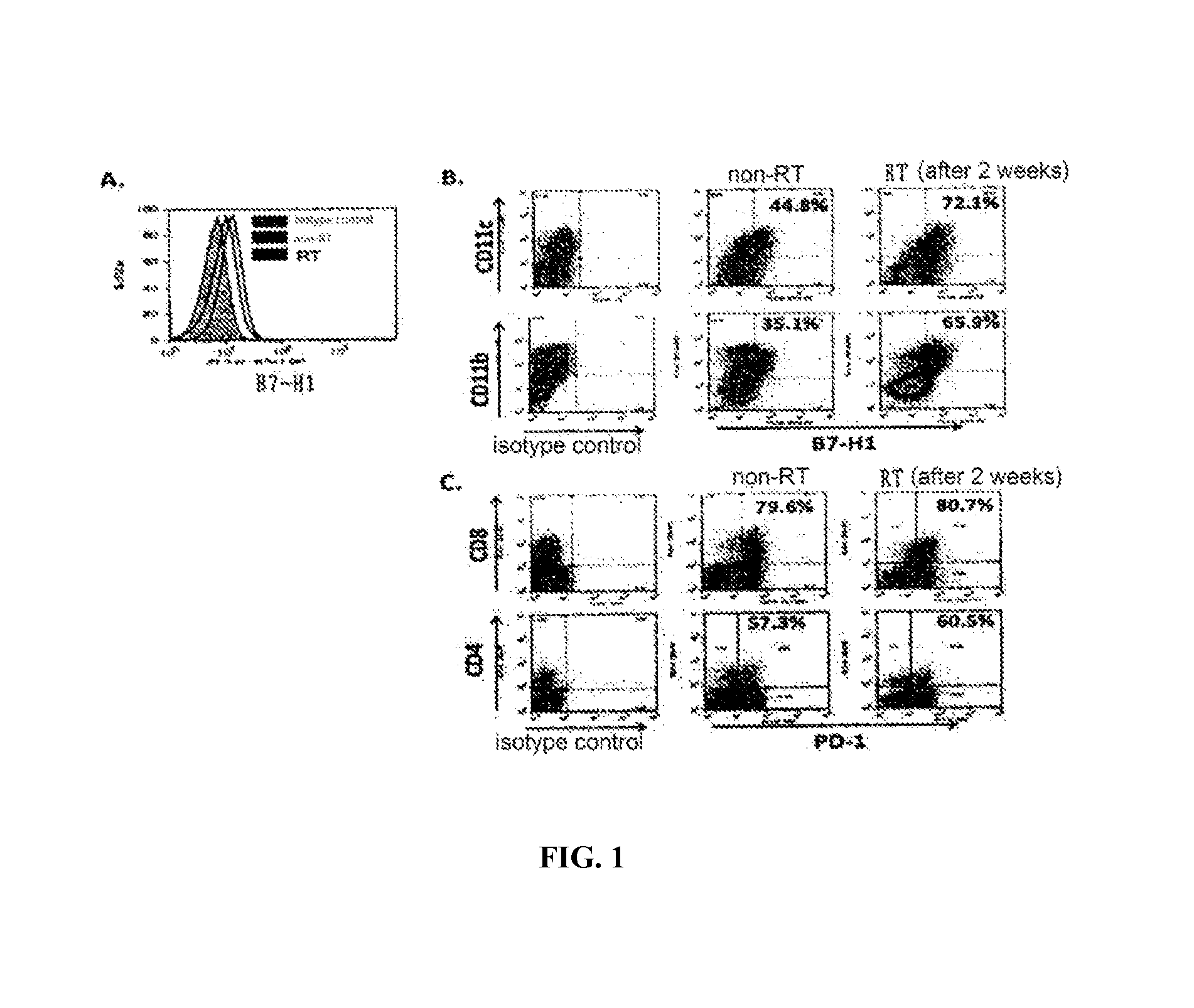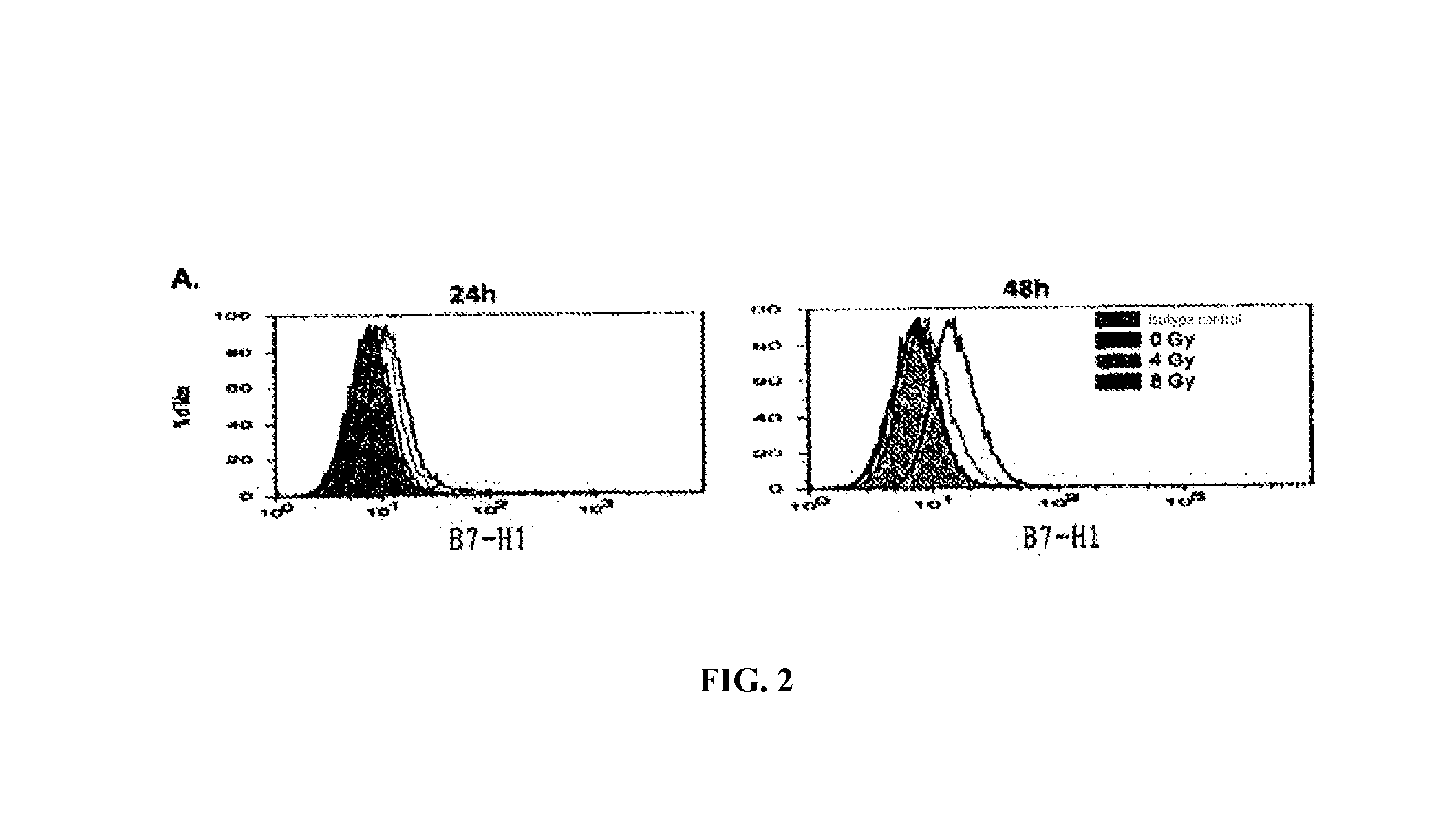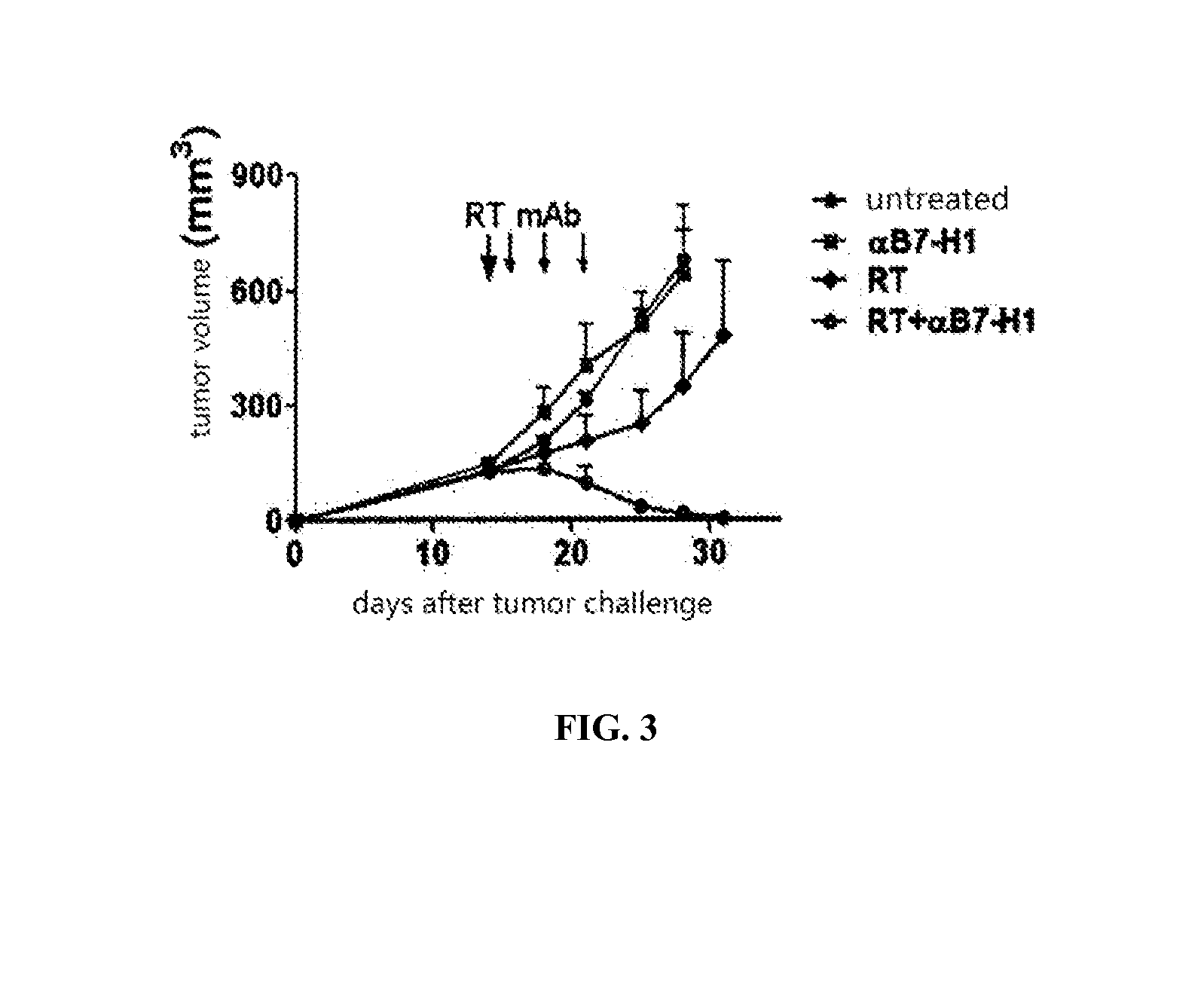Agents for treating tumors, use and method thereof
a technology for tumors and agents, applied in the field of biomedicine, can solve the problems of tumor recurrence after rt, tumor shrinkage, unclear, etc., and achieve the effects of reducing tumor burden, increasing antitumor immunity, and inhibiting further antitumor immunity
- Summary
- Abstract
- Description
- Claims
- Application Information
AI Technical Summary
Benefits of technology
Problems solved by technology
Method used
Image
Examples
example 1
B7-H1 and PD-1 Were Highly Expressed in Tumor Microenvironment After Radiation
[0049]Recurrence after RT is a common problem, which is at least partially due to the presence of RT-resistant tumor cells and / or tissues in a subject. The present inventor proposes that the course of recurrence, i.e., progression of these RT-resistant tumors, may involve inhibitory molecules that inhibit T-cell responses. In order to investigate whether or not RT induces the expression of B7-H1 / PD1, the inventor stained B7-H1 on tumor cells, dendritic cells and macrophages, and stained PD-1 on CD430 T-cells and CD8+ T-cells. The experimental procedure was briefly described as follows. 5×105 TUBO tumor cells (derived from breast cancer cells of Balb / c Her2 / neu transgenic mice)18 were injected subcutaneously in the flanks of Balb / c mice. At day 14, the mice were locally irradiated with 15 Grays (Gy) using an X-ray generator (PCM 1000, Pantak). At day 28, the tumors were removed and digested for 30 min with...
example 2
RT Caused Upregulation of B7-H1
[0051]In order to investigate whether or not RT can induce expression of B7-H1 on tumor cells (Myc-Cap prostate cancer cell line19), the tumor cells (Myc-Cap tumor cell line) were treated with 0, 4 and 8 Gy of irradiation. Then, the irradiated tumor cells were cultured for 24 or 48 hours. After 24 or 48 hours, the cells were harvested, and the harvested cells (106 cells) were subjected to standard staining with an anti-B7-H1 monoclonal antibody (0.5 μg / ml of antibody 10F.9G2, purchased from Bio-X cell, West Lebanon, N.H. 03784, USA). The unirradiated Myc-Cap cells were used as a control. The results showed that RT significantly upregulated the expression of B7-H1 in Myc-Cap cells.
example 3
Blockade of Anti-B7-H1 Promoted Local RT Effect and Reduced Tumor Burden
[0052]In order to test whether or not RT-mediated B7-H1 impairs acquired immune response, B7-H1 / PD1 signaling pathway was blocked while performing RT. 5×105 TUBO cells were injected subcutaneously in the flanks of Balb / c mice. At day 14, the mice were locally treated with a dosage of 12 Gy of irradiation (using an X-ray generator, PCM 1000, Pantak). At days 15, 18 and 21, the mice were intraperitoneally injected with 50 μg of B7-H1 blocking monoclonal antibody (clone 10F.9G2, purchased from Bio-X cell, West Lebanon, N.H. 03784, USA), respectively, and tumor growth was monitored. The results showed that although neither RT nor the B7-H1 blocking monoclonal antibody alone had any significant effect on tumor growth, the combination of RT and the antibody generated a synergistic effect, effectively causing significant tumor regression (FIG. 3).
PUM
| Property | Measurement | Unit |
|---|---|---|
| resistance | aaaaa | aaaaa |
| tumor shrinkage | aaaaa | aaaaa |
| composition | aaaaa | aaaaa |
Abstract
Description
Claims
Application Information
 Login to View More
Login to View More - R&D
- Intellectual Property
- Life Sciences
- Materials
- Tech Scout
- Unparalleled Data Quality
- Higher Quality Content
- 60% Fewer Hallucinations
Browse by: Latest US Patents, China's latest patents, Technical Efficacy Thesaurus, Application Domain, Technology Topic, Popular Technical Reports.
© 2025 PatSnap. All rights reserved.Legal|Privacy policy|Modern Slavery Act Transparency Statement|Sitemap|About US| Contact US: help@patsnap.com



